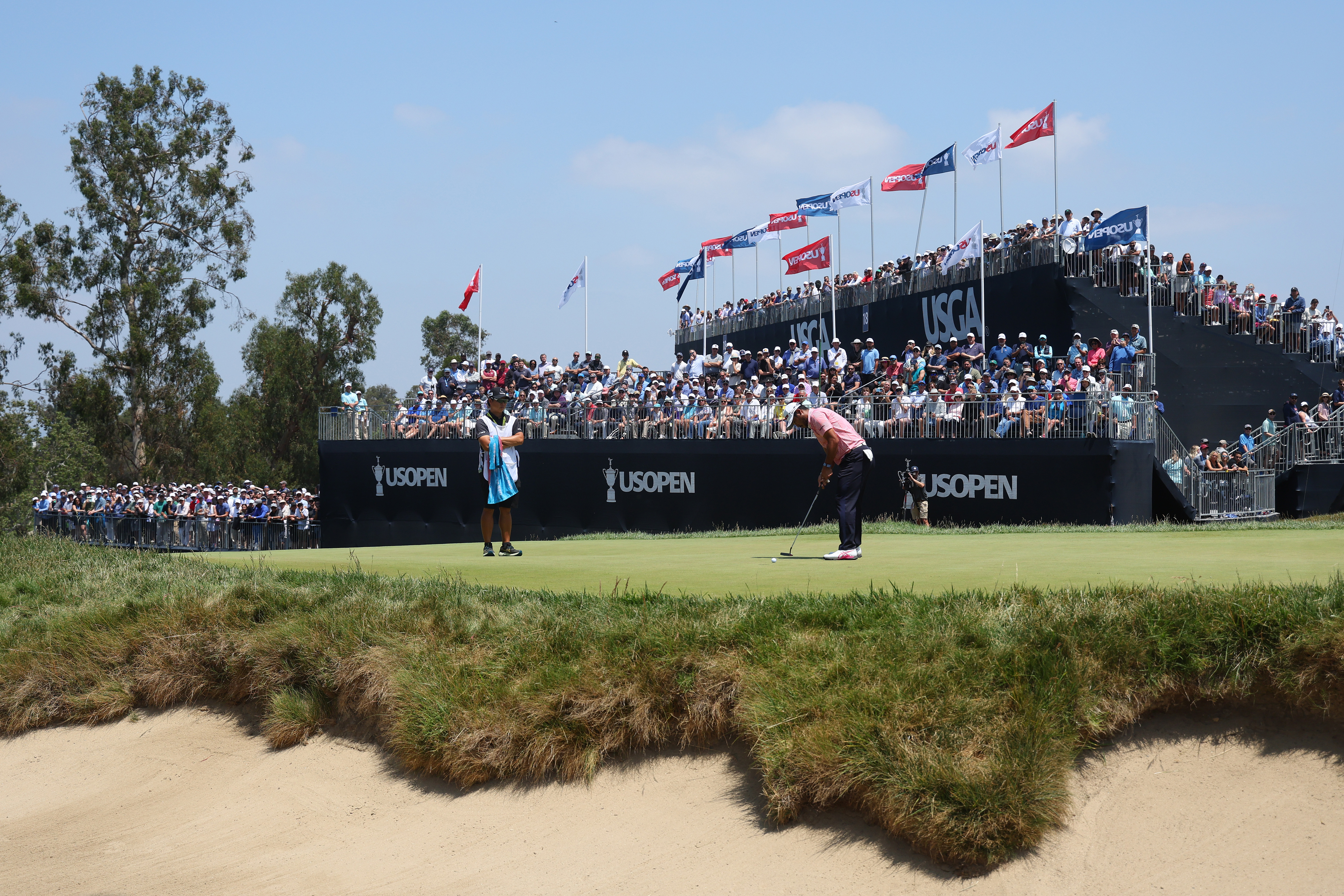LOS ANGELES — For most of its 123 years, the United States Open has embodied archetypes: a certain kind of course set-up is presented, a certain kind of examination will be administered, a certain kind of player will flourish.
Its venues are known to work over skill and psyche. Generations of sports shrinks put their kids through college by processing players’ PTSD from Oakmont, Winged Foot, Shinnecock Hills and Bethpage Black. Players who survived fit a profile too. Curtis Strange, Hale Irwin, Payne Stewart—flinty competitors who would think twice before giving another player a Heimlich. Nicklaus and Hogan too. They would discount everyone overheard whining in the locker room until they knew how few opponents were left to beat.
But the most enduring U.S. Open archetype is the examination itself. It’s never been a test of execution alone, but of patience, discipline and intestinal fortitude. U.S. Opens weren’t won, they were earned. It mattered not which blazered USGA chief was out front – Mike Davis or Joe Dey – his job was to tighten the thumbscrews on the world’s best golfers. And when they yelped, twist ’em a little more.
The good old days are gone for most of those ideals. The U.S. Open’s character isn’t lost, but for a number of reasons it has altered.
The mix of venues is more experimental than the familiar roster of northeastern establishment clubs. Places like Pinehurst, Chambers Bay, Erin Hills and Los Angeles Country Club boast fairways that are, by U.S. Open standards, wider than the Great Plains, with playing corridors that promise little firewood for Casa Chamblee. The movement toward authentic architecture with more width and angles – goodbye Rees Jones, hello Gil Hanse – theoretically demands greater imagination from players, but only if crispy conditions can be guaranteed. Which, of course, they can’t.
The Open ‘specialist’ is also a relic of the past. Among recent winners, only Brooks Koepka mirrors that old identikit profile of yore. Unsurprisingly, he’s not enthused about L.A.C.C. “I think it should be around par,” he said Friday, eyeing a leaderboard on which Rickie Fowler was double digits into the red. “I’m not a huge fan of this place.”
Each major has a particular identity. The Masters owes its stature to exclusivity, thus beating the weakest field translates to golf’s pinnacle achievement in the eyes of so many. The Open (Brit edition) is defined by history, the charming vagaries of ancient linksland and the weather. The PGA Championship is, well, friendly toward its players and most similar to the weekly tests on the PGA Tour. And the U.S. Open? Well that’s like being waterboarded for four days.
Or it used to be. Two factors have diluted that reputation. First is the distances players hit the golf ball, which leaves any course ripe for the taking. Hitting fairways isn’t as important as it was when you had a mid-iron for your next shot rather than a wedge. Second is the almost imperceptible timidity of the USGA.
Timidity is too harsh an adjective, admittedly, but the organization has been burned too often by snafus at its signature event, whether losing the greens at Shinnecock Hills or losing the fairways at Chambers Bay. The corrosive effect of ceaseless player complaints and public roastings has combined to leave the USGA just a notch more shy with the thumbscrews. Set-ups no longer teeter on the edge. The last time anyone was really manhandled at an Open was when Mike Davis wrestled Bird Man out of the trophy ceremony in 2012. His successor, Mike Whan, isn’t a USGA lifer and is more inclined to avoid creating situations for which generations of his predecessors often had to grudgingly apologize.
Thursday brought the lowest round in the history of the championship (twice!), followed by histrionics about a lack of challenge. By Friday afternoon, scores were stuck in neutral. It won’t get easier from here to the finish line. The course set-up for the first round was a gentle handshake, in the parlance of L.A.C.C.’s architect, George C. Thomas. Friday’s tees were a little longer, the pins a little tougher. By Sunday, the gentle handshake will feel more like brass knuckles on bone.
L.A.C.C. is plenty tough, but it’s not old U.S. Open tough. That’s not an L.A.C.C. problem, it’s a USGA problem. The identity of the championship has been tethered to an acceptable winning score for too long, so that even a seminal performance risks being diminished, taken as evidence that the course was too easy rather than the winner being too good.
This U.S. Open will be a success, no matter the winning total. L.A.C.C. is sublime and the set-up is fair. The USGA has presented the challenge that was within its control, but has not sought to manufacture one. That’s a significant mindset shift from years past. If there’s a USGA failure to protect the archaic ideal of what a U.S. Open should be – excruciatingly difficult, with a winner around even par – then it lies not in what we are seeing in Los Angeles, but in long-ago decisions, or more accurately the absence thereof, in relation to distance.

